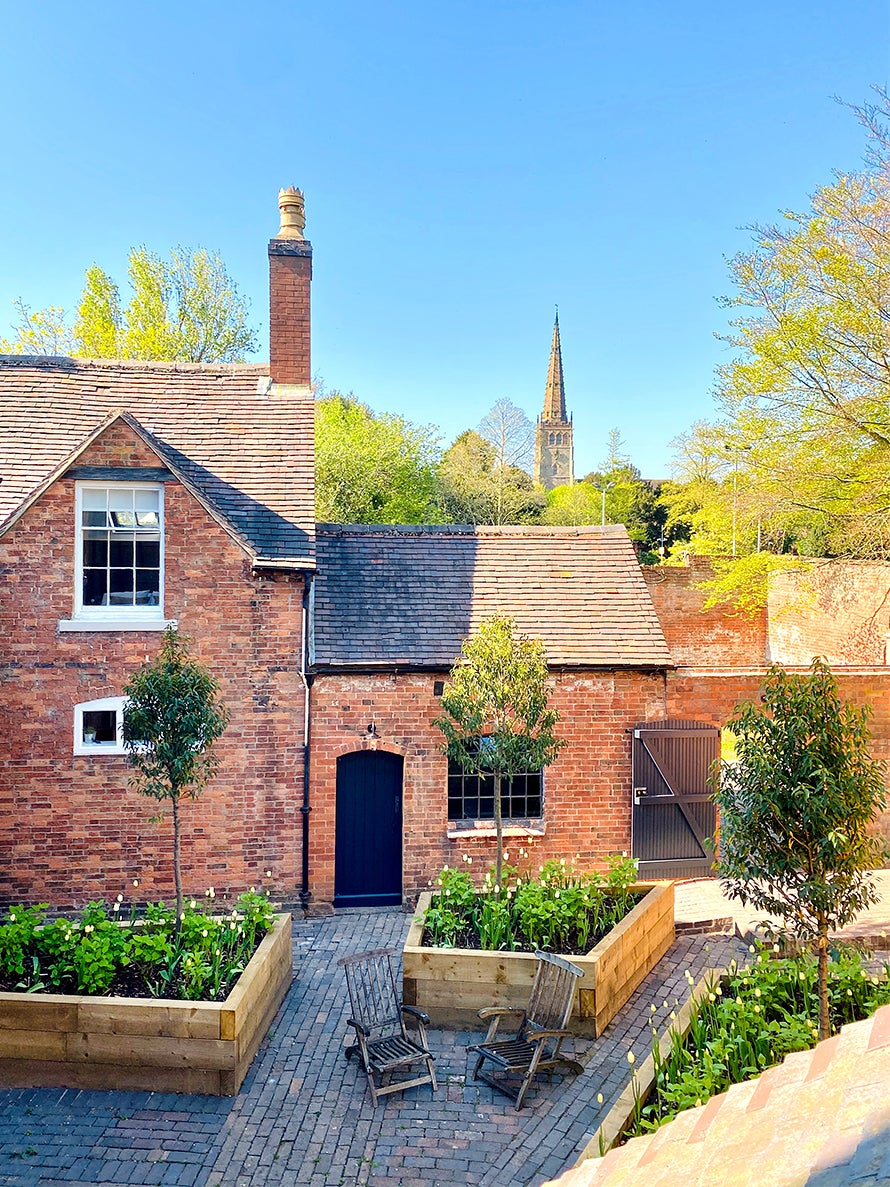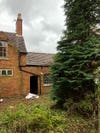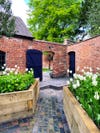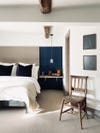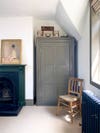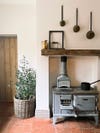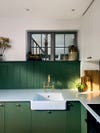This Couple Is Renovating an Abandoned British Estate Entirely on Their Own
It was once owned by a King of England.
Updated Oct 11, 2018 11:12 PM
We may earn revenue from the products available on this page and participate in affiliate programs.
“It looked like a scene from The Secret Garden,” says Dean, an architect, of his first visit to the home he has since dubbed My Tiny Estate. The ivy had grown so thick over the brick walls that a quarter of the buildings couldn’t even be accessed. A year and a half ago, Dean and his partner, Borja, a surveyor, had been looking at real estate in the English countryside and stumbled upon this Warwickshire property, but it was almost too big a project to take on: It had been abandoned for nearly 100 years.
That day the last remaining caretaker showed them around. (One noble family had owned the property since it had been given to them by King Henry VII in 1486. It was used only as a “smaller” side property, typically by the lord’s widow once a successor took over the main estate.) His father had been the caretaker as well, and so he told tales of decades past as he walked the couple through the rambling courtyards and cottages. “We were immediately sold by the history,” remembers Dean.
Knowing they had their work cut out for them, they put in a low-ball offer, half expecting it to be rejected, but it landed them the keys. It turns out rundown royal estates aren’t in demand. Their plan of attack: Restore the caretaker’s cottage first to live in during the rest of the renovation, and work their way up to the main Georgian house, where they would eventually move. The other four houses on the land would become vacation rentals. But there was only one way they could make it work with their budget: Do all the work themselves, no exceptions—and do it all on the side when they weren’t at their full-time jobs.
Peeling Back the Layers
For weeks, the couple pulled and cut their way through the thick vegetation to reveal what was hidden underneath. It took almost a month to find all the outbuildings that had been buried under the crawling vines; Borja didn’t step foot in some of them for nearly a year. “It was kind of like unveiling a present,” says Dean, who even discovered the buried lower level of a building in the servants’ courtyard.
The duo let the seasons dictate progress. “On the few days when it’s nice outside in England, we tackled exterior work, like the rose garden,” says Borja. Cleaning the 26 chimneys on the estate was the one task they ended up hiring out, which was a good idea given the pros uncovered 70 years’ worth of bird’s nests.
Revealing the Historic Character
On colder, rainier days, the pair focused their attention inside on the caretaker’s cottage. “It was the easiest and most manageable project,” says Dean. He taught himself plumbing and electrical work, while Borja tackled things like plastering and tiling. They wanted to restore as much as possible, so they exposed original wood beams and installed new wall paneling to match the architectural details they found in other parts of the property. White walls throughout serve as a backdrop for woodwork painted in historic shades like brownish gray and hunter green. Fenwick & Tilbrook, the local paint company they used, even made them a custom dark navy blend (a tradition for large British properties), which they used to paint all the exterior doors.
Making the Most of Found Objects
In the kitchen, the terracotta floor tiles were so thick with dirt in the beginning, it was almost impossible to tell what color they were. A good scrubbing returned them to their original finish. After finding an old wood-burning stove in the stables (which had been ripped out and replaced with an electric heater in the ’70s), they moved it back to its original nook. Above it, they installed a ledge in the form of a large oak beam found in the garden.
Customizing a Budget Solution
Dean’s obsession with organizing dictated their choice of IKEA cabinets: “I love their storage solutions,” he says. “But I didn’t want anyone else to have our kitchen, so we made the doors ourselves.” Using flat wood panels, they cut the fronts to size, painted them, and screwed in antique brass knobs. Even though they couldn’t afford a DeVol kitchen (their initial inspiration), the couple did splurge on a solid brass tap from the iconic British kitchen company to further elevate the space.
With the cottage completed, Dean and Borja are on to tackling the servants’ quarters (which will become two vacation rentals) and learning new skills like wallpapering. They may be a long way away from living à la Downton Abbey, but they’re laying the groundwork one brick at a time.
Our Fall Style issue has arrived! Subscribe now to get an exclusive first look at Ayesha Curry’s Bay Area home—and discover how design can shape our world.
